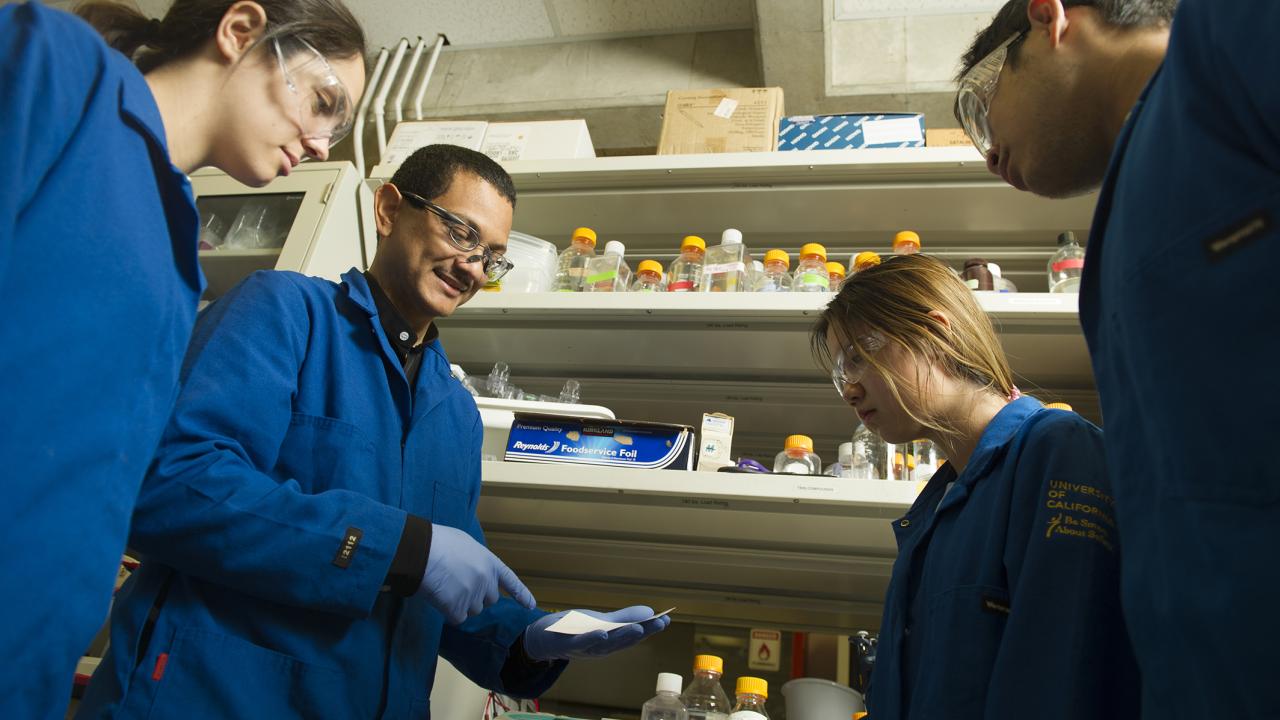What you don’t know about ibuprofen, one of the world’s most popular painkillers, could well fill a book — and that book has just been published, authored by Professor Aldrin Gomes and 36 of his current and former students at the University of California, Davis.
“Ibuprofen is an affordable and widely used medication that has transformed pain management for millions worldwide,” said Gomes, who teaches in the Department of Neurobiology, Physiology and Behavior. “However, its story serves as a powerful reminder of the delicate balance between benefit and risk.”
Ibuprofen is ubiquitous, with many people taking it several days a month for headaches, aches and pains, or to control fevers. But peel back the label on that bottle in your bathroom cupboard and there is a list of adverse side effects: stroke, heart attack, heart failure, stomach bleeding. One study found that ibuprofen tripled the risk of stroke while other studies found an increased risk of stroke ranging from 10% to 50%, Gomes said. This risk begins within the first few weeks of regular, daily use.
Ibuprofen interacts with more than 400 other prescription drugs; dropped pills can be toxic to pets; and it finds its way into waterways, harming fish and plants.
“These are things most people don’t know,” he said.
Gomes’ lab studies the biochemical pathways through which ibuprofen and other painkillers affect the body, both positively to control pain, fever and inflammation, and negatively to cause side effects. He is especially interested in how and why these drugs affect the cardiovascular system.
A lab learning project
Gomes was inspired to write the book because he found that undergraduate students entering his lab knew almost nothing about the potential negative effects of ibuprofen.
“I thought it would be good for the students, and it became a lab project,” he said. Gomes is passionate about mentoring undergraduates: In January he received a Presidential Award for Excellence in Science, Mathematics and Engineering Mentoring from the outgoing Biden administration. So he was looking for ways to bring more undergraduates into his lab to do experiential learning that would complement their bench research projects.
Since the book project began, all students working in Gomes’ lab have been invited to take part, including writing, editing and illustrating.
“Being part of this project taught me that good science is not just about making discoveries, but about how effectively we communicate them,” said Ahmad Ikram, a recent graduate from UC Davis and major contributing author to the book. “Each chapter reflects our effort to bridge the gap between data and understanding, and to tell the story of ibuprofen in a way that truly connects.”
The book includes chapters on how ibuprofen works to ease pain and inflammation and reduce fevers; how it can affect the heart, liver, gastrointestinal tract and kidneys; how to use painkillers responsibly; and natural alternatives for pain relief.
Additional contributors to the book are: Omnia Ali, Mariza Azmat, Emily Barson, Priyanka Basu, Igor Bejenari, Jillian Cellucci, Celeste Do, Ryan Dulong, Daisaku Edwards, Jaime Morales Gallardo, Emily Gartrell, Massie Gardizi, Timothy Gutierrez, Christina Jung, Cierra Hall, Tan Hua, Nicole Lonsway, Aparna Manoj, Natalie Nashed, Rachel Nguyen, Irene Park, Gabriela Rivera, Lauren Roehrs, Siona Samanta, Erik-Matthew Sario, Gaia Soldano, Vanessa Su, Isabella Tan, Jacob Tuazon, Mackenze Trpcic, Tanishq Vaidya, Yael Vainberg, Christina Vyoda, Yue (Cynthia) Yu and Yuhan Zhang. Qian Xu, M.D., Ph.D., vice president of clinical development of Jiangsu Hengrui Medicine Company, acted as a technical consultant and contributor.
“The Comprehensive Guide to Ibuprofen: The Good, the Bad and the Unexpected” is published June 3 by Mystic River Books. It is available on Amazon as an e-book, paperback or hardcover.
Media Resources
Media Contacts
- Aldrin Gomes, Neurobiology, Physiology and Behavior, avgomes@ucdavis.edu
- Andy Fell, News and Media Relations, 530-304-8888, ahfell@ucdavis.edu
